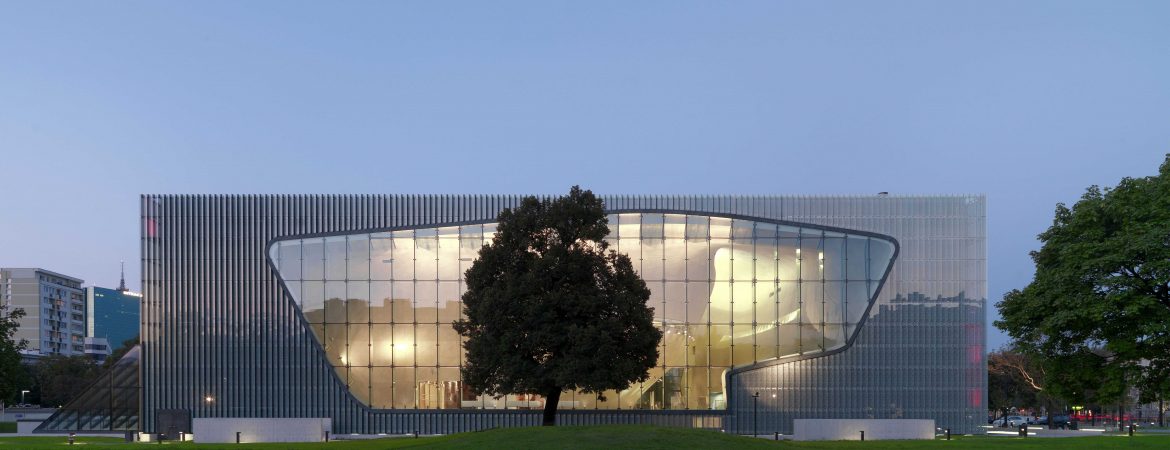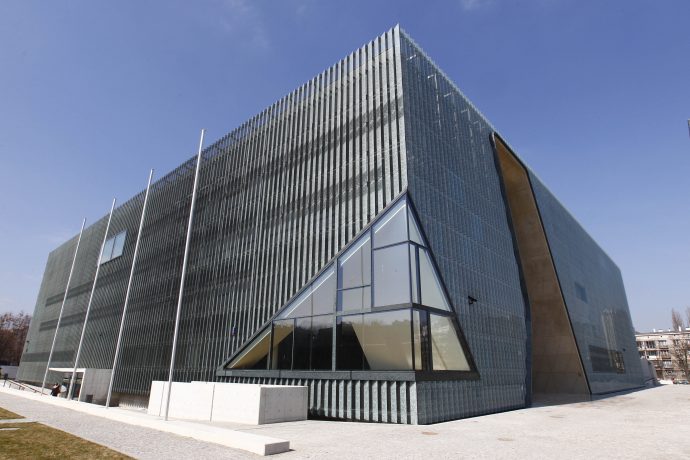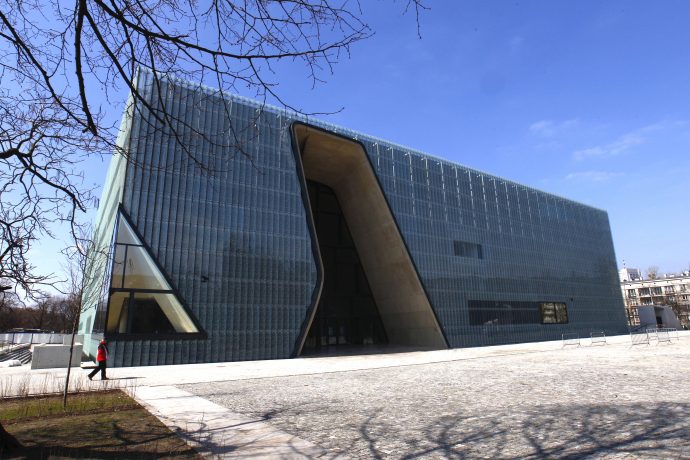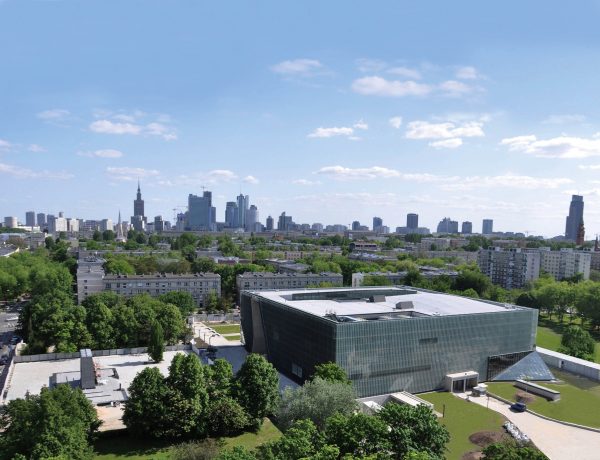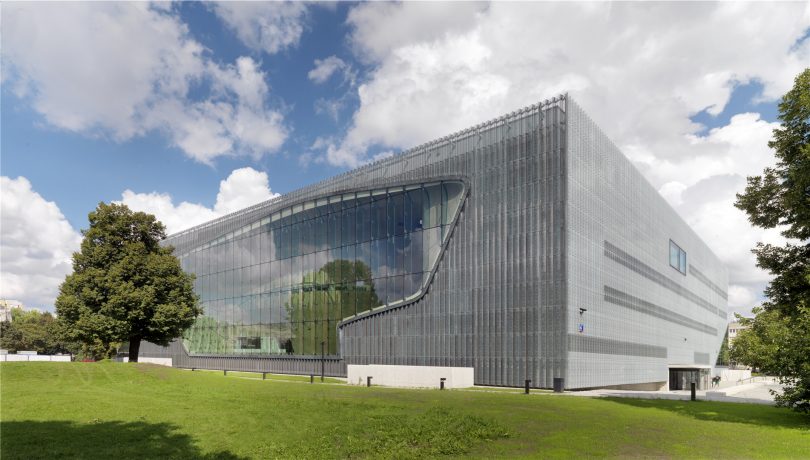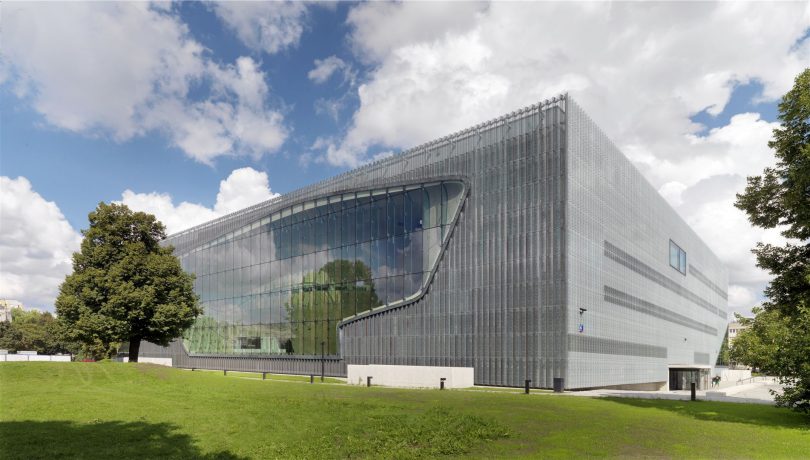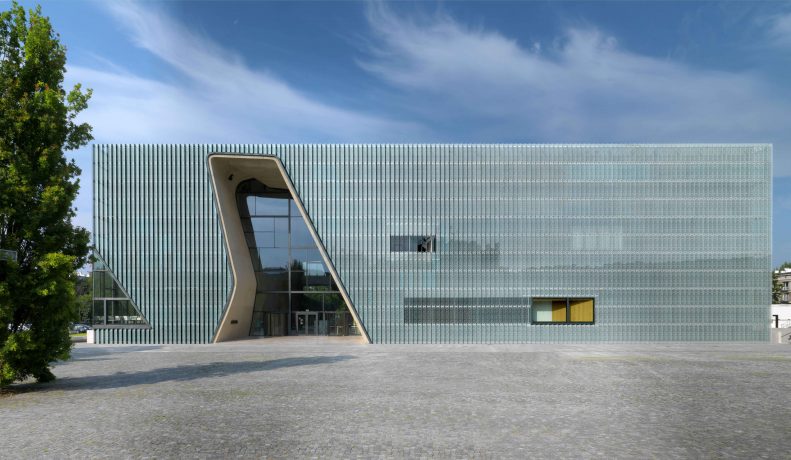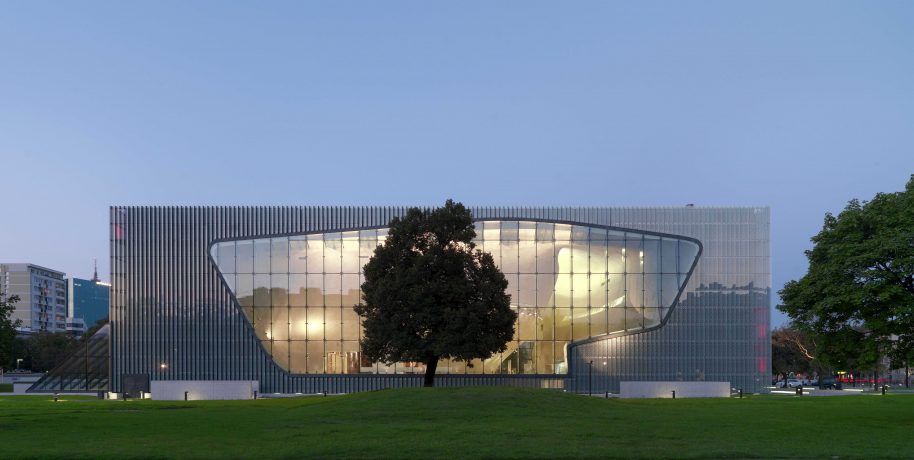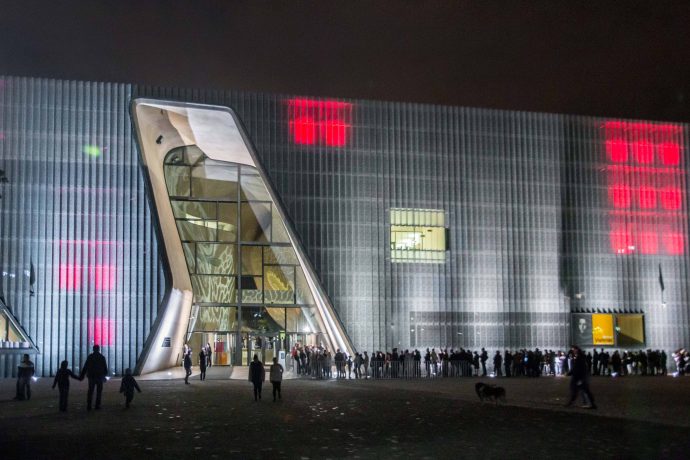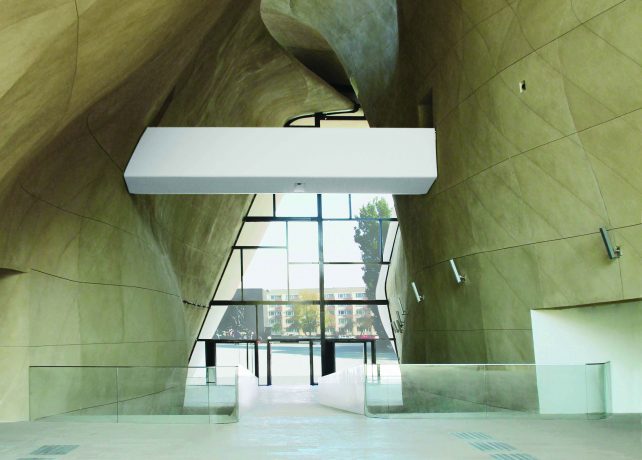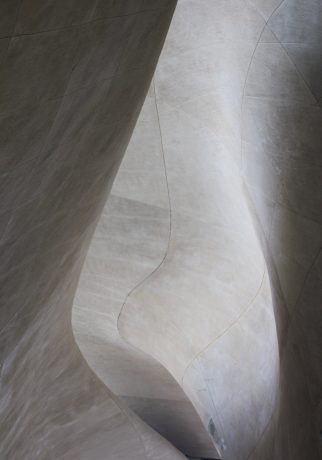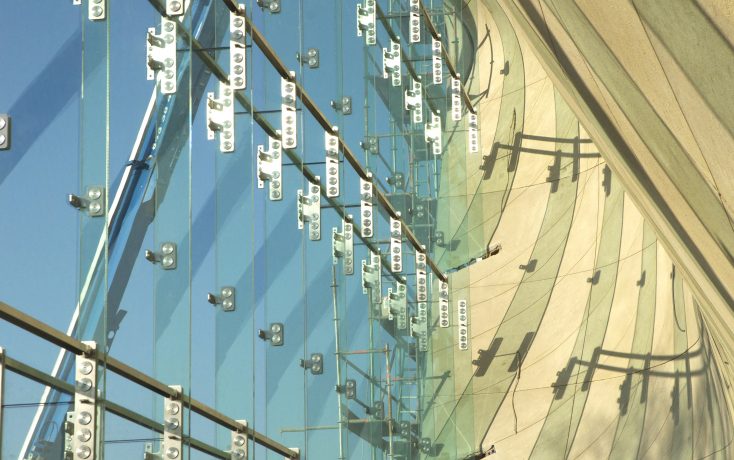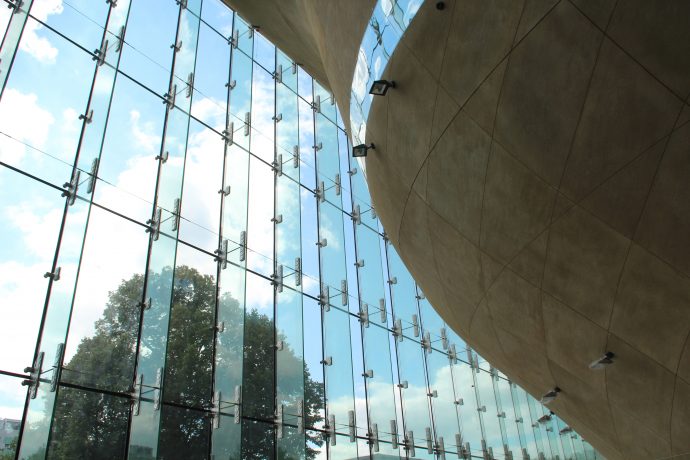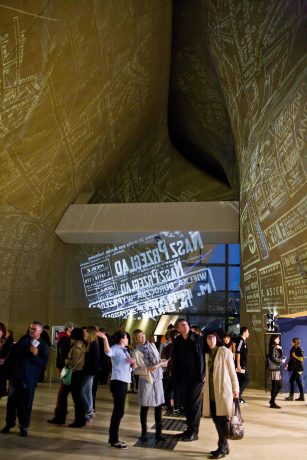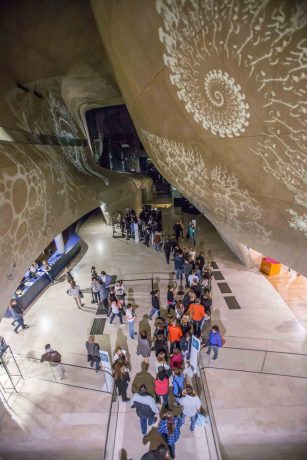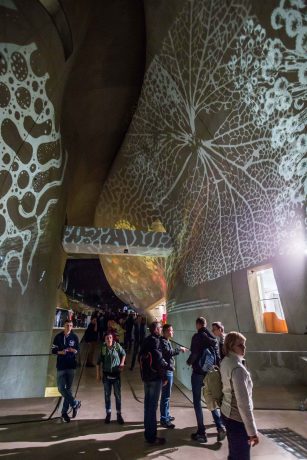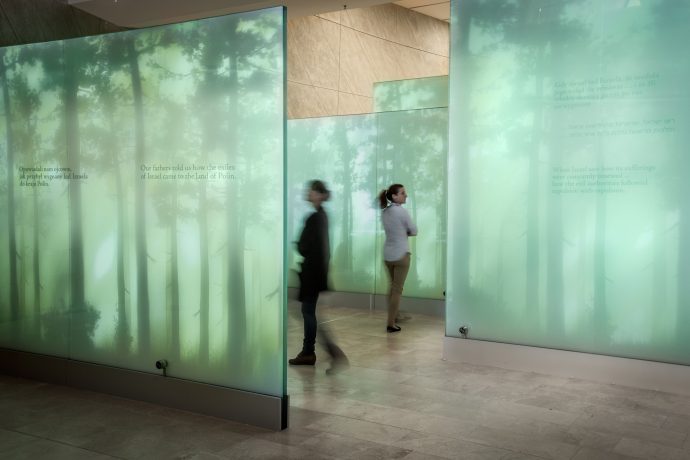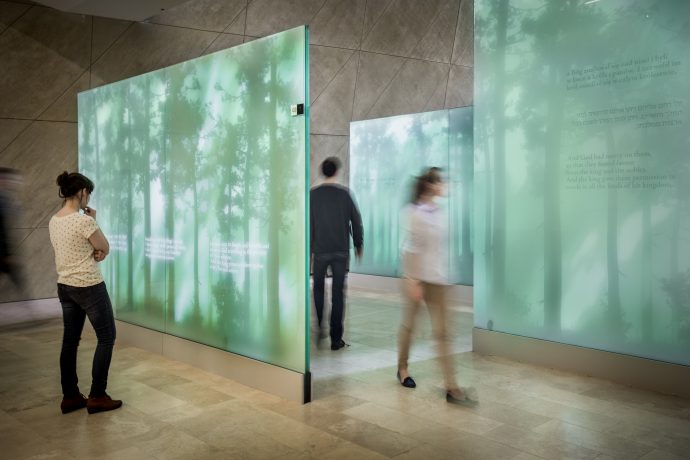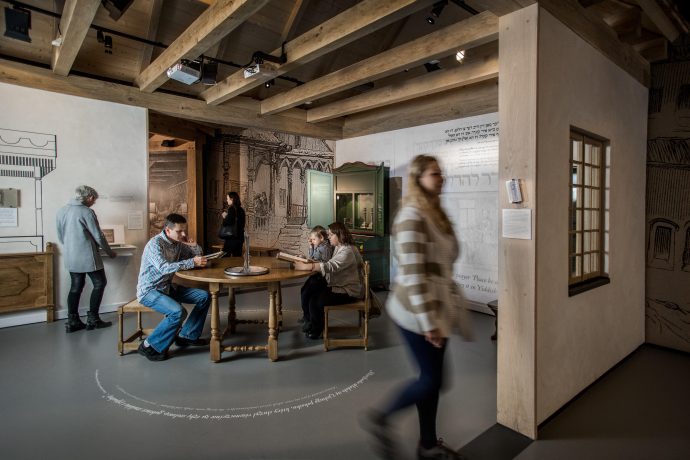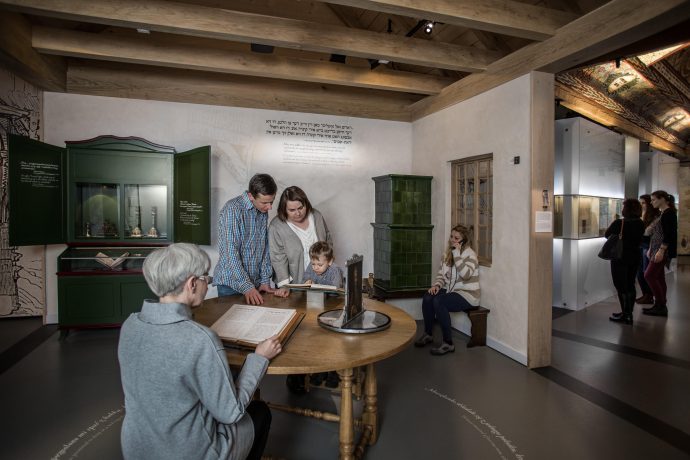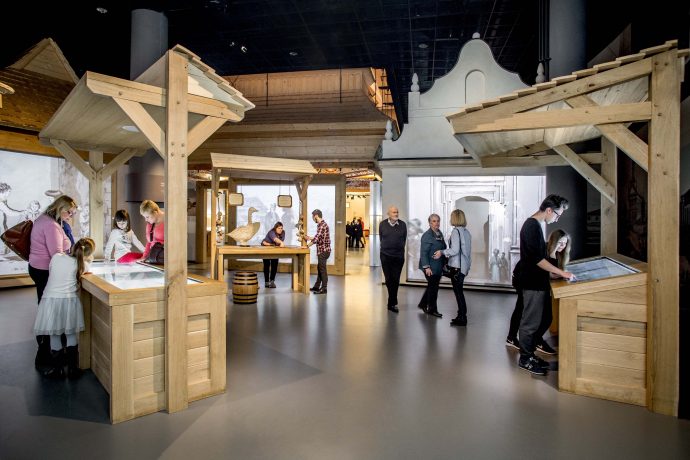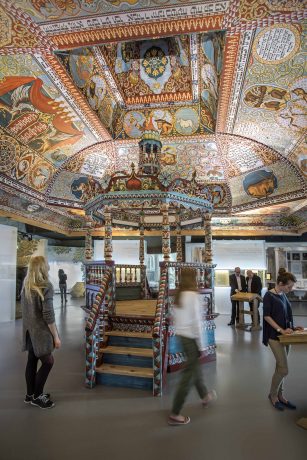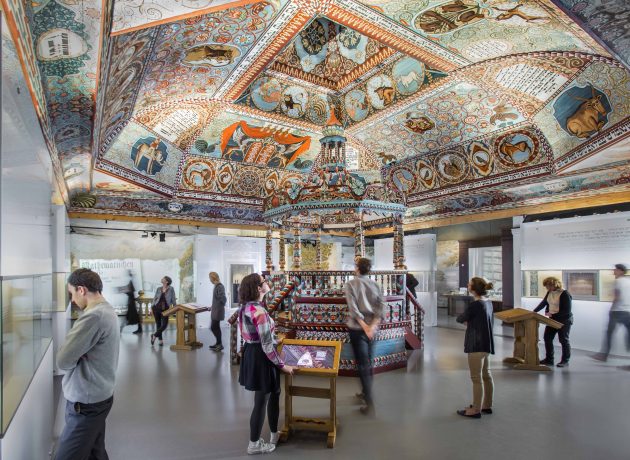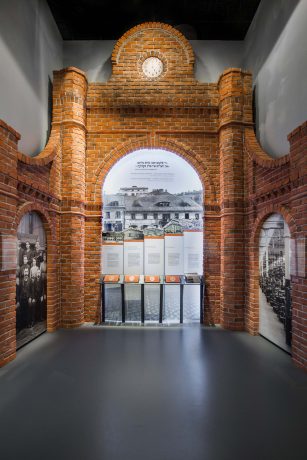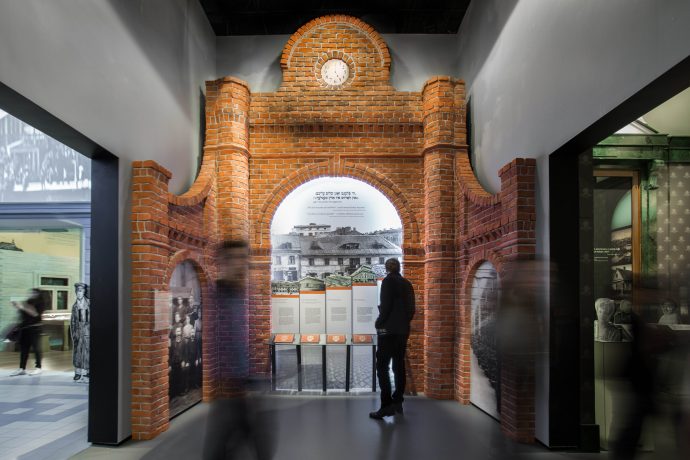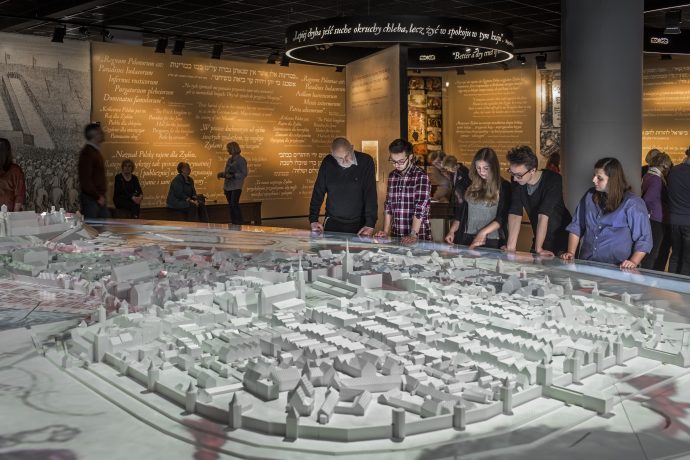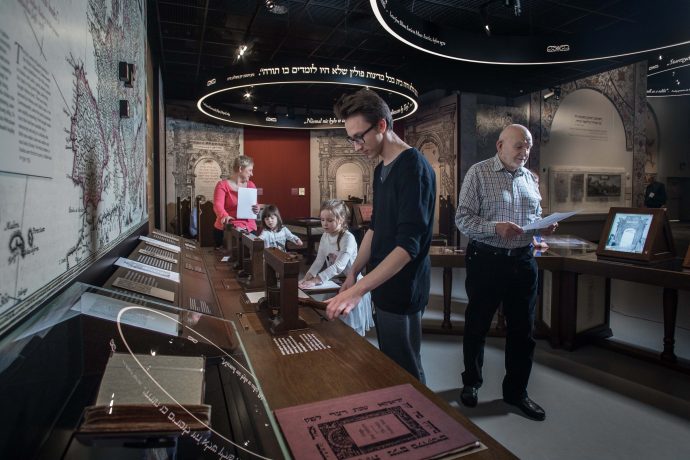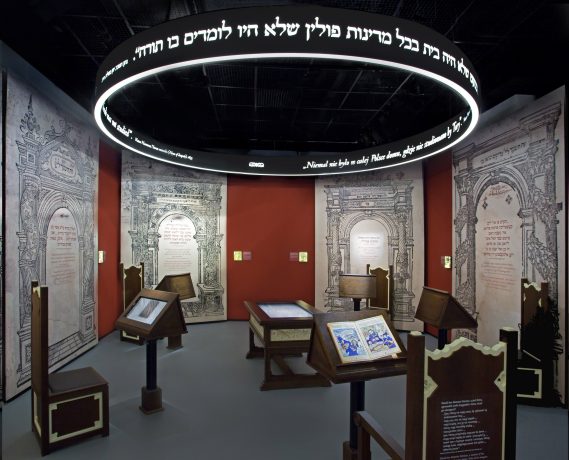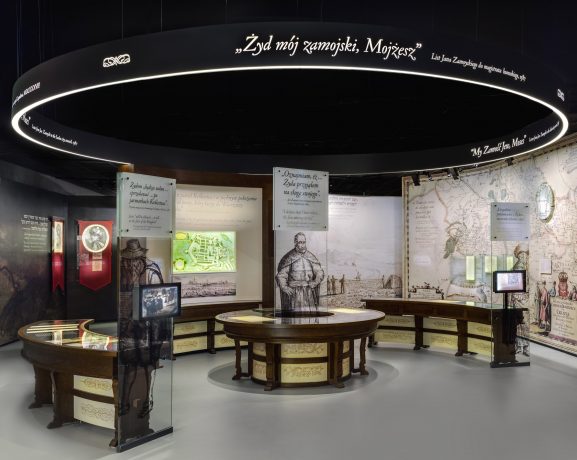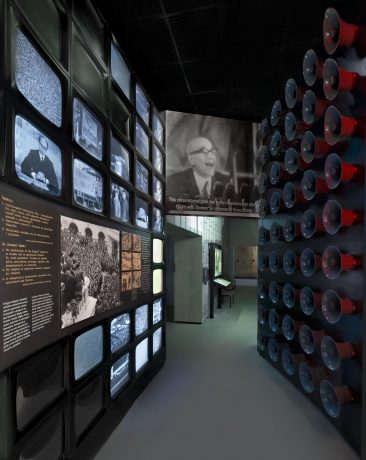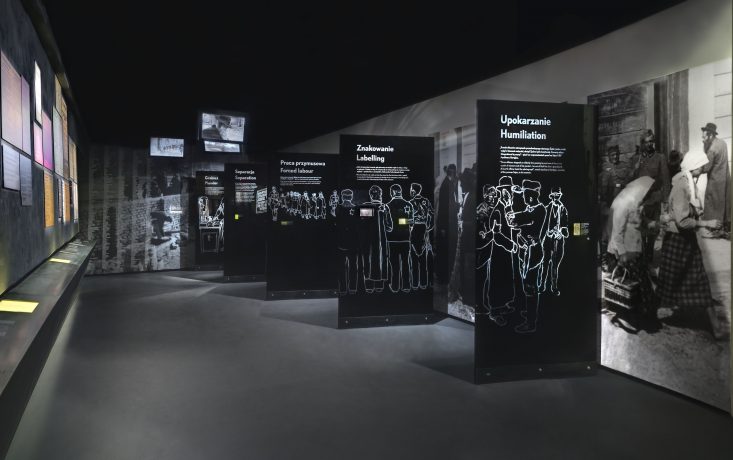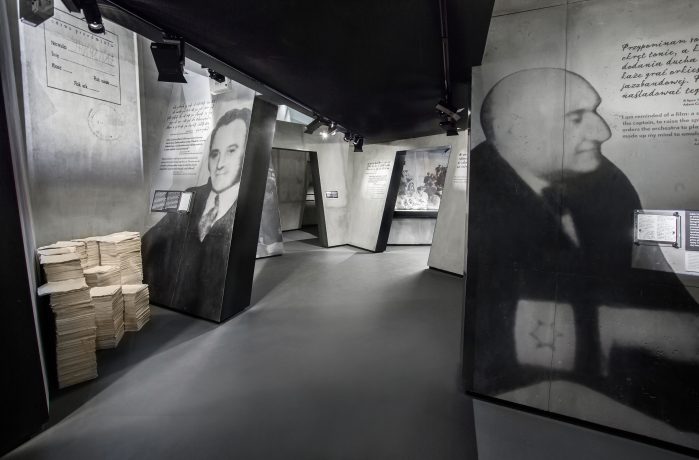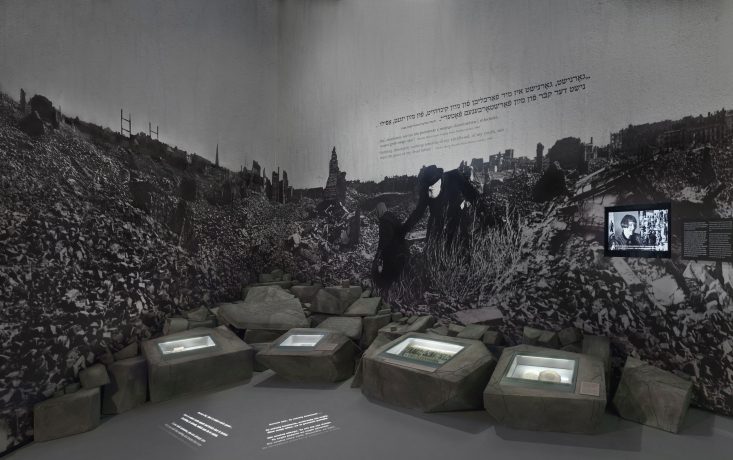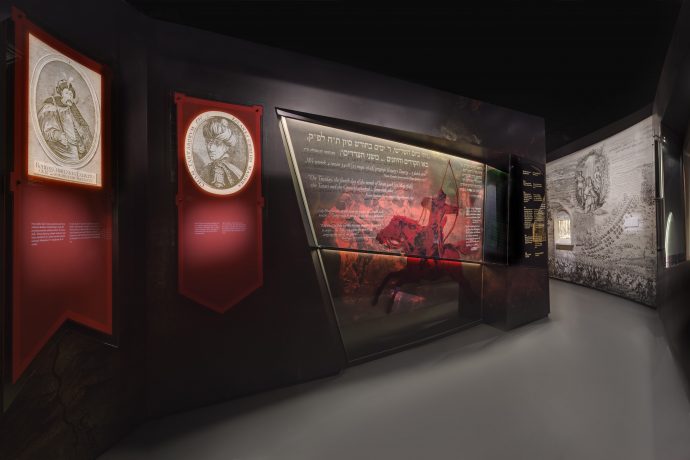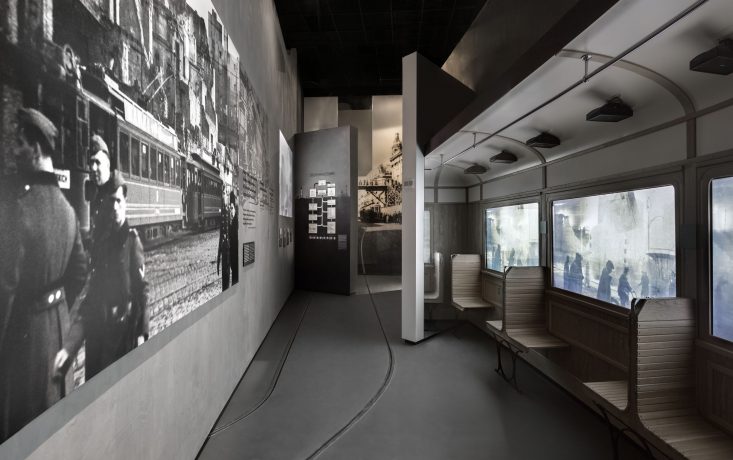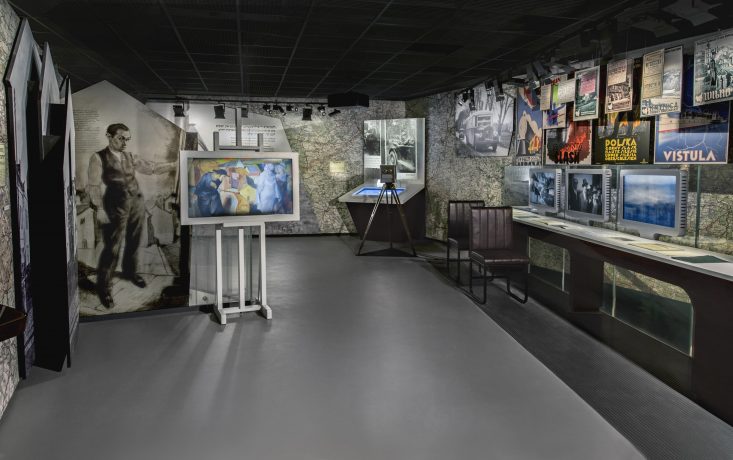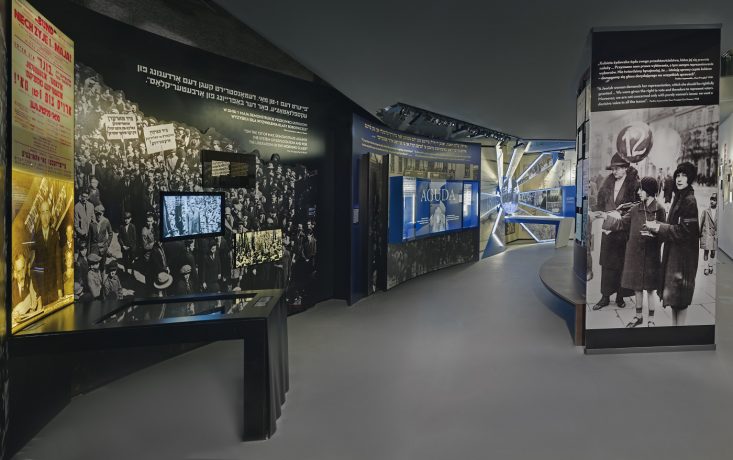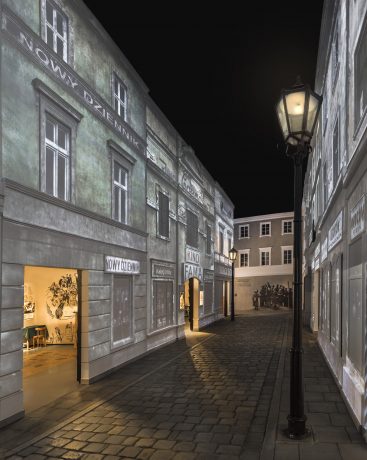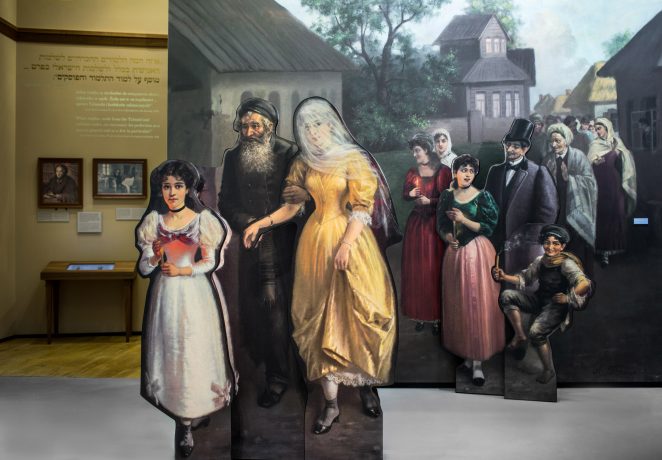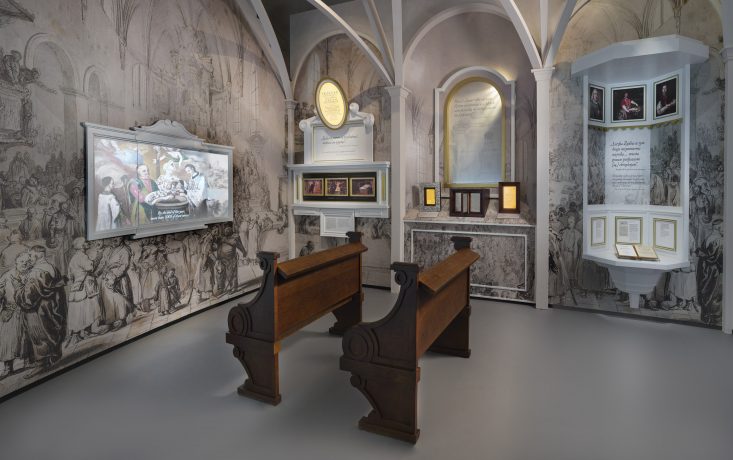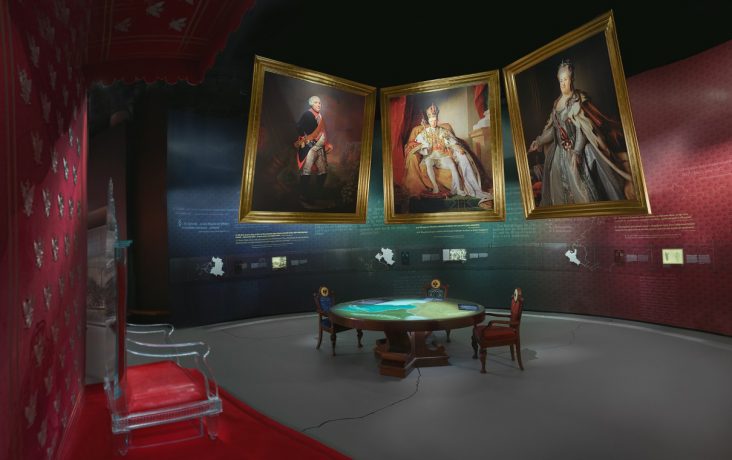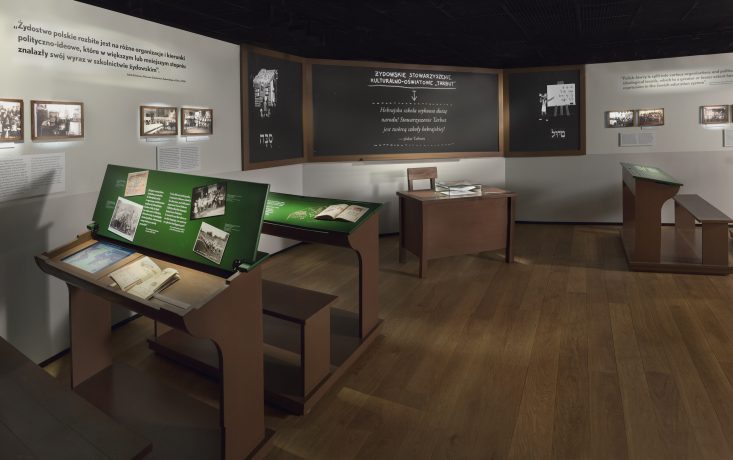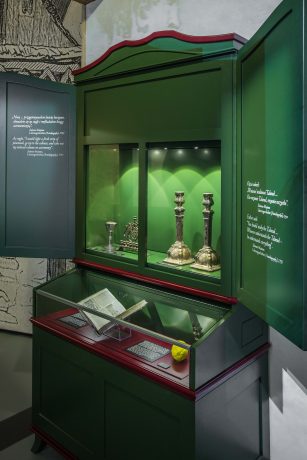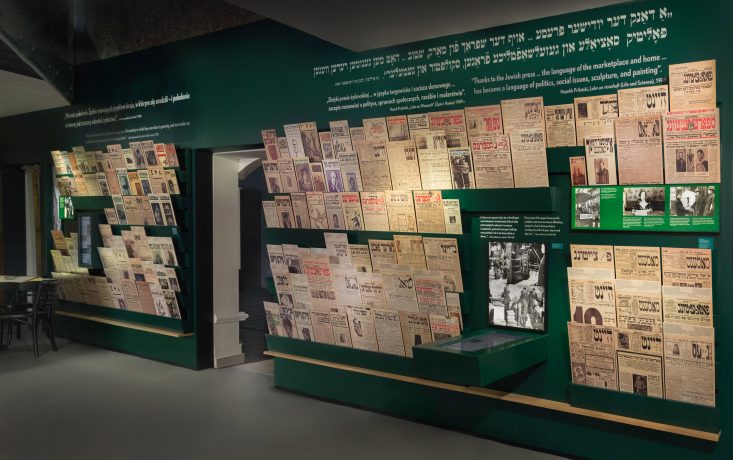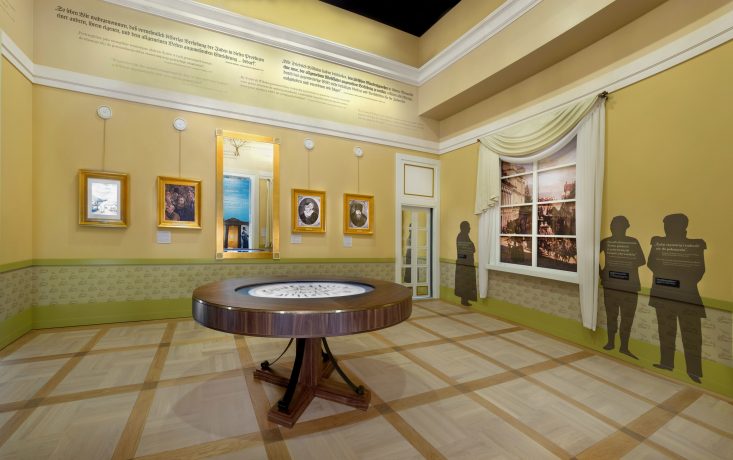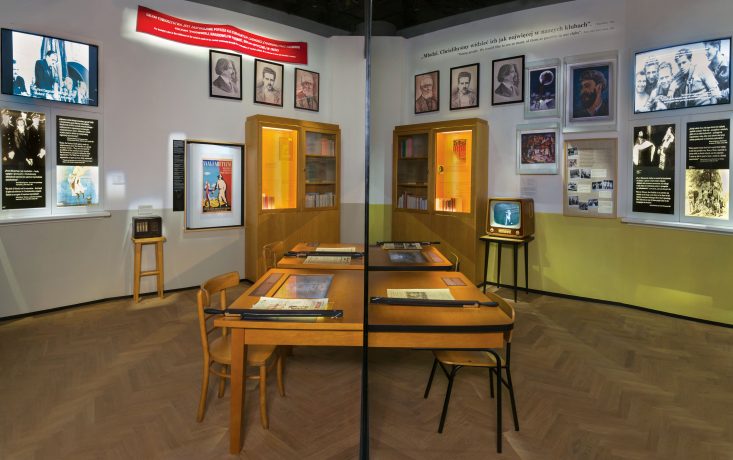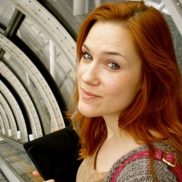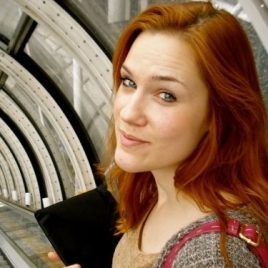3 years ago, another location appeared on the already complex and impressive map of museums in Warsaw. Officially opened to the public in 2014, POLIN, Museum of the History of Polish Jews has already found itself among the popular ones. In 2016, as a confirmation, POLIN received the extremely important and prestigious award of European Museum of the Year, thus making it the only Polish Museum in the nearly forty years of competition history. The jury of outstanding specialists, who have visited hundreds of museums in Europe, were truly impressed by the permanent exhibition that leads the visitors through over one thousand year of Polish Jews history. The award is also a recognition that the Museum’s idea of creating a dialogue on difficult and sometimes controversial matters, though still with respect and mutual understanding, was worth all the effort.
It all started with an idea. Back in 1993, when a group of members from the Association of Jewish Historical Institute came up with the concept of creating a big institution that would be completely dedicated to the history of Polish Jews, which has been complicated, but fairly peaceful until dark climax of Second World War. A principal of the Association, Grażyna Pawlak, officially presented the idea to the city and, in 1995, the Council decided the lot where construction work could start. They chose a place located in the center of the old Jewish District, called the North District, now Muranów. During the War, it was where the Jewish Ghetto was placed and currently there are two monument founded to memorize the heroes and the victims.
The new building of the museum was meant to blend with the background, being in a perfect symbiosis with the statues and green area around. In 2005, the competition was opened and nearly 250 architects registered to submit their projects. The winning concept was by Finnish team Lahdelma & Mahlamäki. Soon after construction started, the special Tent appeared, an artistic installation set up to be a specific forerunner for the whole museum mission. It was actively operating as an information point of the whole process and the place for concerts and outdoor exhibitions. There is more exciting info for all architectural geeks here: the project by Finnish architects not only won a special prize of Chicago Athenaeum International Architecture Award in 2008, but also, in 2013, it received a Eurobuild Award for the best architectural project of the year in Poland. It also collected prizes of Association of Finnish Architects and Association of Polish Architects. The museum from the outside, its „cover”, was already a great success.
Why is it so special? Actually the building itself is quite modest and minimalistic, which perfectly fits in the background as it was planned from the very beginning. The construction superbly corresponds with the nearby park and the monument of Heroes of the Jewish Ghetto. What is really original about the building is that it is all covered from the outside with the glass panels all overlaid with the Hebrew and Latin letters creating the word "Polin." The main entrance from the Zamenhof Street is shaped like a Hebrew character taw.
Now, we can finally come inside. What is waiting for the visitors in such exquisite place? First, there is brilliant permanent exhibition on the one thousand-year history of Polish Jews. This massive display connects two underground tiers and covers the surface of more than 4000 square meters. It leads the visitors through different stages of growth of Jewish society on the Polish territory. What does Polin mean? It comes from the legend about the first Jews arriving in Poland, back then the Polish Kingdom. Escaping the persecution they experienced in the West of Europe, Jews reached lands extended to the East of the continent. The voice from above told them „Po-lin”, which means „You rest here”. That is why they stay and Poland has become their biggest European home for more than 1000 years. To that legend refers first part of the exhibition called Woods. It’s a completely magical installation that takes the visitors to the beginning of the journey, sinking them mostly in the legends and stories. Another part of the display presents First Encounters and refers to the period between 960-1500. This Medieval gallery precisely and factually tells about the arrival of the first Jews.
There is also the famous and important document called „Kaliski Statute”, which was given to Jews in 1264 by the Prince Bolesław Pious. It guaranteed the existence of Jewish courts and separate courts that were to deal with the cases linking Jews and Christians. The display also touches upon the matter of work restriction as Jews could work only in the certain sectors as most of the crafts and manufactures were monopolized and against all non-Christians. Jewish people could only do two things: trading and credits. There is also a big part focused on development of literature and printing in Hebrew featuring four stands where the visitors can print the printing sign themselves!
Another part of the exhibition, Paradisus Iudaeorum, illustrates the golden age of Jewish society in Poland that was between 16th and 17th century. Then we follow to Jewish Town. Another period of history is shown based on the ordinary life in the Jewish town. The Encounters with Modernity part refers to the time when Poland was divided between Prussia, Austria and Russia until the outbreak of the First World War. It also brings closer the turbulent period of „Promised Land”, when Jewish Traders developed textile manufactures in Lodz. Additionally, the phenomenon of modern anti-Semitism started appearing. The time between the two World Wars is presented through the display On the Jewish Street. This period is considered to be the second golden age for the Jewish people. The dark times of Holocaust are introduced in the another part. It is important to note that, because of drastic material, it is up to the guardians to allow children under 12 years old to enter that gallery. The last part is called Postwar Years and the main question which is asked there is „Stay or Leave?”. It reflects on the emigration and issues that Jews had to face after the War, when nothing was ever going to be the same.
Apart from the massive permanent exhibition, there are plenty of temporary galleries and events such as workshops or lectures. The Museum is actively operating, planning, and educating. There is always something to do or see or to listen about. POLIN is now one of the most important institutions in Warsaw, making the city proud because of its mission and achievements.
